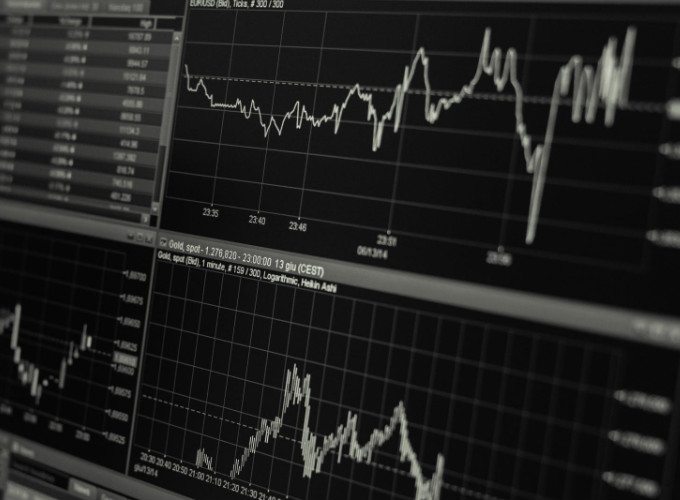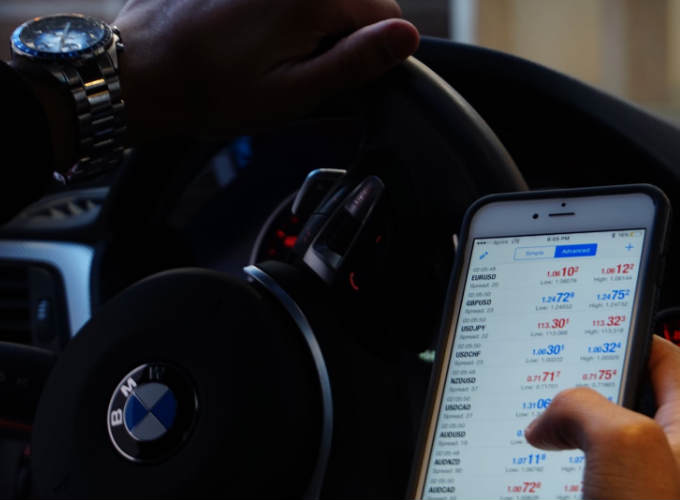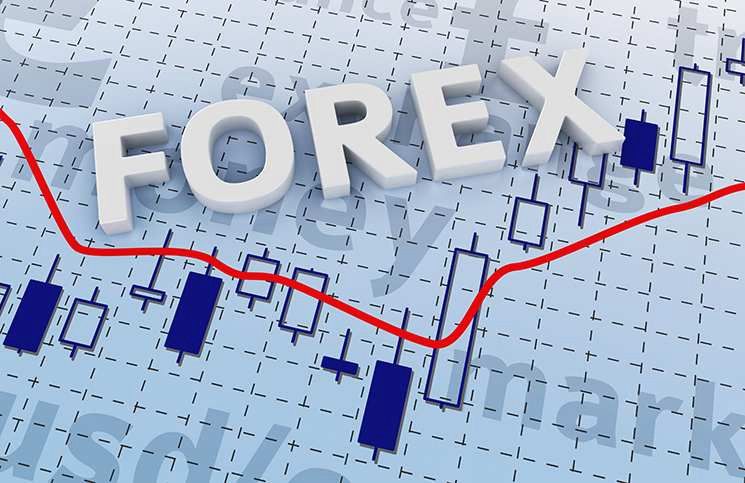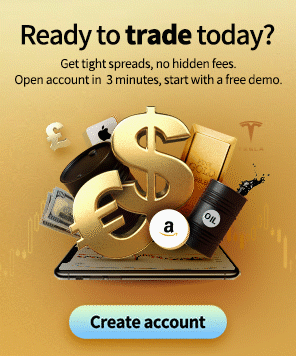What is Forex (FX) Trading? 7 Steps To Start Trading Forex For Beginners
This article will show you what is forex trading and 7 actionable steps to start fx trading online in Australia.

What Is Forex Trading?
Forex ( FX ) trading, also known as foreign exchange or currency trading. A national currency is used as a medium of exchange within a country or group of countries. The foreign exchange market (also known as the “forex” or “FX” market) is where these currencies are traded against each other.
It is the largest and most “liquid” (easily sold) investment instrument, making it a popular choice for speculators to buy and sell for monetary gain. Besides cash (or spot) markets, speculators also have choices within the derivatives market that includes forwards, futures, options, and CFDs (contracts for difference).
Besides profit motives, participants also use forex (fx) trading as a way to protect (or hedge) themselves against financial losses due to interest rate risk, geopolitical events, and to diversify their overall investment portfolio.
What Is Traded In Forex Market?
The forex market is based on trading currencies against each other in the form of exchange rate pairs.
Some investors like to think of buying a currency as being similar to investing or buying shares in a country. Generally speaking, the price of the currency is the market’s opinion on the health of that country’s economy when compared to other countries.
Currencies are traded in pairs. This is the exchange rate for two different currencies listed as a price quote. The most popular currency pair is EUR/USD followed by USD/JPY.
The first listed currency (also called the base currency) is bought while the second listed currency is sold, as follows:
EUR/USD = 1.10
For this quote, 1 euro is bought for 1.10 USD.
The main objective of fx trading is to make a profit through the exchange of one currency for another with the expectation that the currency bought will increase in value compared to the currency sold. Here is an example of a favorable trade:
*EUR 10,000 x 1.10 = US $11,000
** EUR 10,000 x 1.20 = US $12,000
Major Currencies Pairs in Forex exchange
The following table lists the major currencies traded in the forex market:
7 Steps To Start Forex Market Trading In Australia
While forex investing involves a lot of factors and research, the following steps will help get you started:
Step1: Learn the forex market
Step 2: Choose a forex broker in Australia
Step 3: Decide what currency you want to buy and sell
Step4: Decide what currency you want to buy and sell
Step5: learn the different types of forex trading
Step6: Decide to buy or sell
Step7: Adding orders
Step 1: Learn the forex market
Here are some of the main terms to know before starting:
Currency Pair
A currency pair is expressed in the quotation of one currency unit against another currency unit.
Using the above example: EUR/USD = 1.20
The base currency is Euro and the quote currency is USD. The trade based on the above pair would be 1.20USD for each euro.
Exchange Rate
Similar to a currency pair, this is the rate at which one currency is exchanged for another. Specifically, it is the amount of quote currency required to exchange for one unit of the base currency.
For example: EUR/USD = 1.10
The amount of the quote currency (USD) required to buy the base currency (EUR) is 1.10.
The rate fluctuates depending on market activity, investor speculation, economic indicators and geopolitical events.
Quote
The quote is another word for the exchange rate, expressed with two figures. The first is the bid/selling price and the second is the ask/buying price.
For example: EUR/USD = 1.10/1.30
The bid/selling price for 1.10 EUR is the ask/buying price of 1.30 USD.
Spread
As mentioned above, the quote contains two prices: the bid and ask price. The difference between these two prices is the spread.
The spread is usually how “no commission” brokers make their money instead of charging fees. The cost of the trade is built into the buy and sell price of the currency pair, replacing brokerage service costs and transaction fees.
The spread is defined by units called pips, with one pip being equal to 0.0001. For example:
EUR/USD = 1.1000/1.1003
The spread in the above quote would be expressed as 3 pips.
There are two types of spreads: variable and fixed. Fixed spreads do not change while variable spreads fluctuate based on market liquidity.
Pip
Pip is an acronym for "percentage in point", and represents the price difference between the bid and ask price, or spread.
It is the smallest price move that an exchange rate can make, priced out to four decimal places (with the exception of Yen-based pairs priced out to two decimal places).
In mathematical terms, a pip is one-hundredth of one percent, or the fourth decimal place (0.0001).
Lot
Lots are amounts of the base currency that is traded, expressed as either standard lots of 100,000 units or micro-lots of 1,000 units. For example: EUR/USD = 1.1000
Standard Lot: 110,000 USD for 100,000 EUR
Micro Lot: 1,100 USD for 1,000 EUR
Margin
Margin trading involves obtaining credit from the fx trading broker, representing the minimum amount of funds required to open a position (or trade) and keep it open.
This is expressed in a percentage. For a USD-based account, trading at 1% margin involves putting down 1 USD for each 100 USD traded.
The actual currency is never bought or sold, what occurs is a contract between the broker and trader based on exchange-rate speculation.
For example, if a trader wishes to purchase a standard USD/JPY lot at 100,000 USD only 1000 USD is required at a 1% margin.
Leverage
Leverage is the ratio of the trader’s actual funds compared to the amount of credit offered by the broker. Some traders favor leverage as a way to amplify their gains through trading with larger volumes when compared to trading smaller volumes using their own funds.
Leverage can vary from as low as 2:1 to as high as 500:1 depending on the broker.

Equity
Equity is referred to as the money in the trader’s account plus the change accrued to any profits or losses.
For example, a deposit of USD 1,000 + USD 100 profit = 1,100 USD in equity.
Margin Call
A margin call is a pre-determined equity amount required to maintain open positions. When the account falls below that level, the broker notifies the trader to deposit more money to keep the positions open.
Long and Short Position

When the trader expects the base currency to rise, this is called taking a long position. When a trader enters a short position, it is in the expectation that the base currency will weaken compared to the quote currency.
Using the EUR/USD pair again, a trader taking a short position is expecting the euro to weaken and to profit from its decrease in value.
Step2: Choose a forex broker in Australia
Step1: Create an account online
Step2:Search the markets to trade, such as BTC/USD
Step3:Open a long or short position
Step4:Set up your position size, take profit, stop-loss, etc.
Step5:Confirm the trade
Mitrade is an Australian fx trading broker offering beginners a simplified way to trade forex, cryptocurrency, commodity, and indices on CFDs.
At Mitrade, when you sign up, you will gain a demo account on the web-based platform or mobile app that helps new users get used to trading currency pairs before risking their own money.

Start Trading Forex on Mitrade>>
Step 3: Decide what currency you want to buy and sell
For many traders, choosing currency pairs has many factors such as geopolitical and economic events.
Buying currency is similar to buying stock in a country. Making predictions on the strength and weaknesses of the economy plays a huge factor in how the currency will perform. For example, if someone believes the economy in Japan will enter into a recession, then they can trade JPY for currency in a stronger economy.
Looking at a country’s trading position is very helpful in determining the strength of that economy. If the country has a high demand for its exports, then the value of its currency should go up to coincide with that demand.
Politics are another important factor with many angles that can be observed. If an election brings a new government into power that frees the economy for increased growth, then the value of the currency is likely to rise.
Long-term values of currencies are dependent on all these factors and many more, including GDP (Gross Domestic Product), employment rates, government spending, and private investment.
Step 4: Decide on what type of forex to trade
Forex trading is more than just buying and selling currencies. There are many options a speculator has in the forex space, including the following:
Spot Forex Market
The spot market is where currencies are traded immediately or “on the spot” as the name implies, using the current market price.
This is the most simple form of fx trading that is highly liquid and works around the clock.
Market entry into the spot forex market is easy, all that is required is an account with a forex trading broker.
Currency Futures
Futures are contracts to buy or sell a certain asset at a specified price on a future date without owning the underlying asset.
Futures contracts are standardized and traded on a centralized exchange. This market has been around for decades, making it transparent and well-regulated.
Currency Options
Similar to futures, an option is a financial instrument that allows a trader to speculate on the price of an asset without owning the asset. It gives the buyer the right or “option” to buy or sell an asset at a specified price on the option’s expiration date.
Currency ETFs
Currency ETFs are exchange-traded funds managed by professionals that track the value of a currency or a basket of currencies from different countries.
They allow ordinary individuals to invest in the forex market through a managed fund without the requirement of placing individual trades. Along with speculating on forex markets, Currency ETFs can help diversify a portfolio or hedge against currency risks.
Forex CFD
A contract for difference (CFD) is a popular form of derivative trading that enables a trader to speculate on the rising or falling prices of many instruments like shares, indices, commodities, treasuries and currencies.
Similar to futures and options trading, the underlying asset is not bought or sold with CFD trading. A speculator can buy or sell any number of units depending on how they believe the price of the asset will move.
Step 5: Determine your margin
As explained in the section on definitions, margin trading involves obtaining credit from the forex broker and represents the minimum amount of funds required to open and maintain a position.
The smaller the margin, the more credit is required. For example, if a trader is trading at 1% margin they will be required to put down 1 USD for every 100 USD traded.
While the profits can be magnified, so can the losses, so determining the amount of margin is dependent upon the credibility of the trader and their risk tolerance.
Step 6: Decide to buy or sell
Buy and sell decisions are made at the discretion of the trader based on their knowledge or belief concerning the movement of the currency.
Currencies in forex are quoted in terms of the base and quote currency as mentioned above. If the trader believes that the base currency will strengthen, they would commonly buy that currency. Conversely, they would sell the base currency if they believe that the quote currency will rise relative to the base.
Step 7: Adding orders
Orders are instructions placed on the platform that execute trades automatically at a point in the future subject to the specifics of that order.
Some examples of orders include “stop” and “limit” orders that a trader will use once a price condition is met in order to lock in profits or avoid losses.
While orders are not compulsory, many traders use them as risk management tools due to the volatile nature of the forex market.
- Gainers & Losers
- Forex
- Commodities
- Indices
- Shares
- Name
- Buy
- Sell
- Change
FX trading FAQs
1. What moves the forex market?
Like all investments, the price of currencies is a function of their supply and demand. When demand for a currency increases, so does its value and conversely when the demand decreases the price goes down.
2. How is the forex market regulated?
There is no centralized body governing the worldwide currency trading market. Each jurisdiction has its own independent government body that supervises the brokers and ensures client protection.
3. How much money is traded on the forex market daily?
The forex market is the largest and most liquid market in the world, with approximately $5 trillion worth of transactions taking place daily.
4. Who are the major players in the forex market?
The major players in the forex market consist of the following groups:
Interbank Market Makers – This group is made up of mostly large commercial and investment banks that make foreign exchange quotes to other market makers and to some large clients.
Interbank Forex Brokers – Players in this group act as intermediaries to arrange forex deals between Interbank market makers.
Interbank Electronic Forex Brokers – This group includes Electronic Broking Services and the Thomson Reuters Dealing service, and provides electronic brokering platforms used by Interbank counterparties.
Central Banks – These are private banks that operate as “national” financial institutions that issue and manage the currency of their respective countries. Besides the maintenance of currency reserves, central banks can expand and contract their national currency to maintain a certain price level.
Smaller Financial Institutions – These institutions are mostly smaller banks that might be trading forex, managing investment funds or executing deals on behalf of clients. They also typically act as the clients of the large market makers.
Hedge Funds – These entities employ traders that actively speculate in the forex market and act as clients of large market makers. Many hedge funds use computers that execute trades automatically using algorithms.
Multinational Corporations – This group includes corporations that trade forex as a way to manage currency risks associated with their commercial activities.
High Net Worth Individuals – This group consists of individuals with amounts of capital large enough in size that enable them to execute trades with the customer desks of market-making institutions.
Why Trade Forex? Advantages Of FX Trading Online
There are many benefits and advantages of trading forex and here are a few reasons forex trading is popular:
√ No commissions
Most retail forex brokers are compensated through the spread, enabling them to offer services free of clearing, exchange, government and brokerage fees.
√ No fixed lot size
Many forex brokers offer the incentive of no fixed minimum trades, enabling many smaller players to easily enter the market.
√ 24-hour market
Forex trading is available 24 hours a day, 7 days a week.
√ Leverage
Leverage gives traders the opportunity to make big gains with a small deposit (although it can amplify losses as well).
√ High Liquidity
Forex trading is the largest investment market in the world, making it highly liquid. Trades are instantaneous and can be done immediately with the click of a mouse.
√ Low Barriers to Entry
With no minimum deposits and zero commissions, online forex trading is open to beginning investors at all income levels.
Conclusion
All countries have currencies, and those currencies are traded in the forex market - the largest investment marketplace in the world.
It is a popular choice for speculators to buy and sell currencies in the spot market or invest in more sophisticated instruments like futures, options, ETFs, and CFDs.
Investing in forex has low barriers to entry, but it can get very complicated. Understanding how economic indicators, geopolitical events, and political decisions can move the values of currencies is valuable to success in the market, so do your research and trade wisely!
Mitrade will help you trade with ease and confidence in Forex.
* The content presented above, whether from a third party or not, is considered as general advice only. This article should not be construed as containing investment advice, investment recommendations, an offer of or solicitation for any transactions in financial instruments.
- Original
- Trading Analysis

Risk Warning: Trading may result in the loss of your entire capital. Trading OTC derivatives may not be suitable for everyone. Please consider our legal disclosure documents before using our services and ensure that you understand the risks involved. You do not own or have any interest in the underlying assets.







